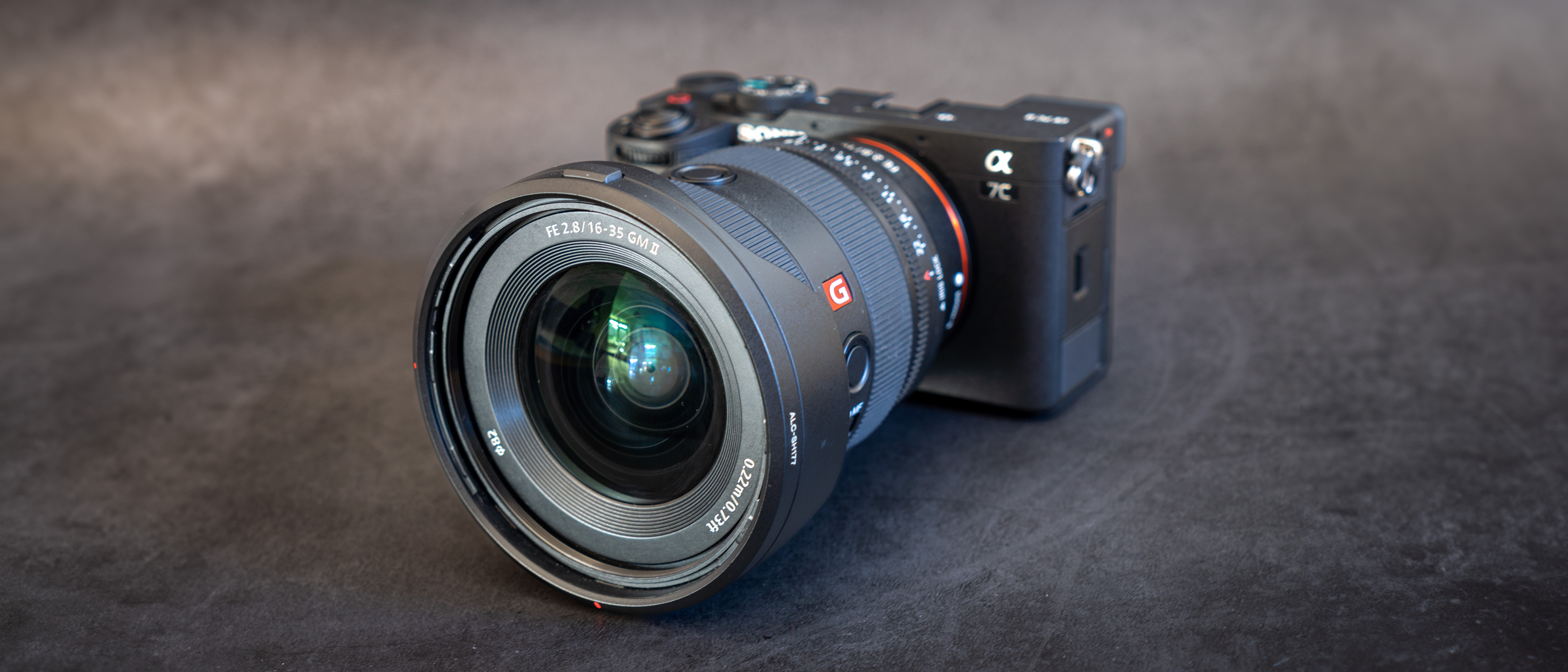Space Verdict
One of the sharpest wide-angle lenses we've tested, the Sony FE 16-35mm f/2.8 GM II is a brilliant addition to any photographer's kit bag, although it'll likely price out beginners and enthusiasts without a large budget.
Pros
- +
Incredibly sharp & bright images
- +
Fast & quiet autofocus
- +
Barely any chromatic aberration
- +
Features two custom buttons
- +
Fully weather-sealed
Cons
- -
Not a cheap lens
- -
Some ghosting when shooting toward bright light
- -
Lens hood is almost pointless
- -
Underwhelming sunstars
Why you can trust Space.com
A reliable wide-angle zoom lens is a staple in any photographer's arsenal, and in September 2023 Sony released an updated version of their 16-35mm f2/8 GM lens, making it the third and final lens in the 'holy trinity' lineup to receive a version 2. We've already reviewed the updated Sony FE 24-70mm f/2.8 GM II and the Sony FE 70-200mm f/2.8 GM OSS II, so we couldn't wait to get our hands on the Sony FE 16-35mm f/2.8 GM II to see whether it matched the quality and performance of the other two lenses.
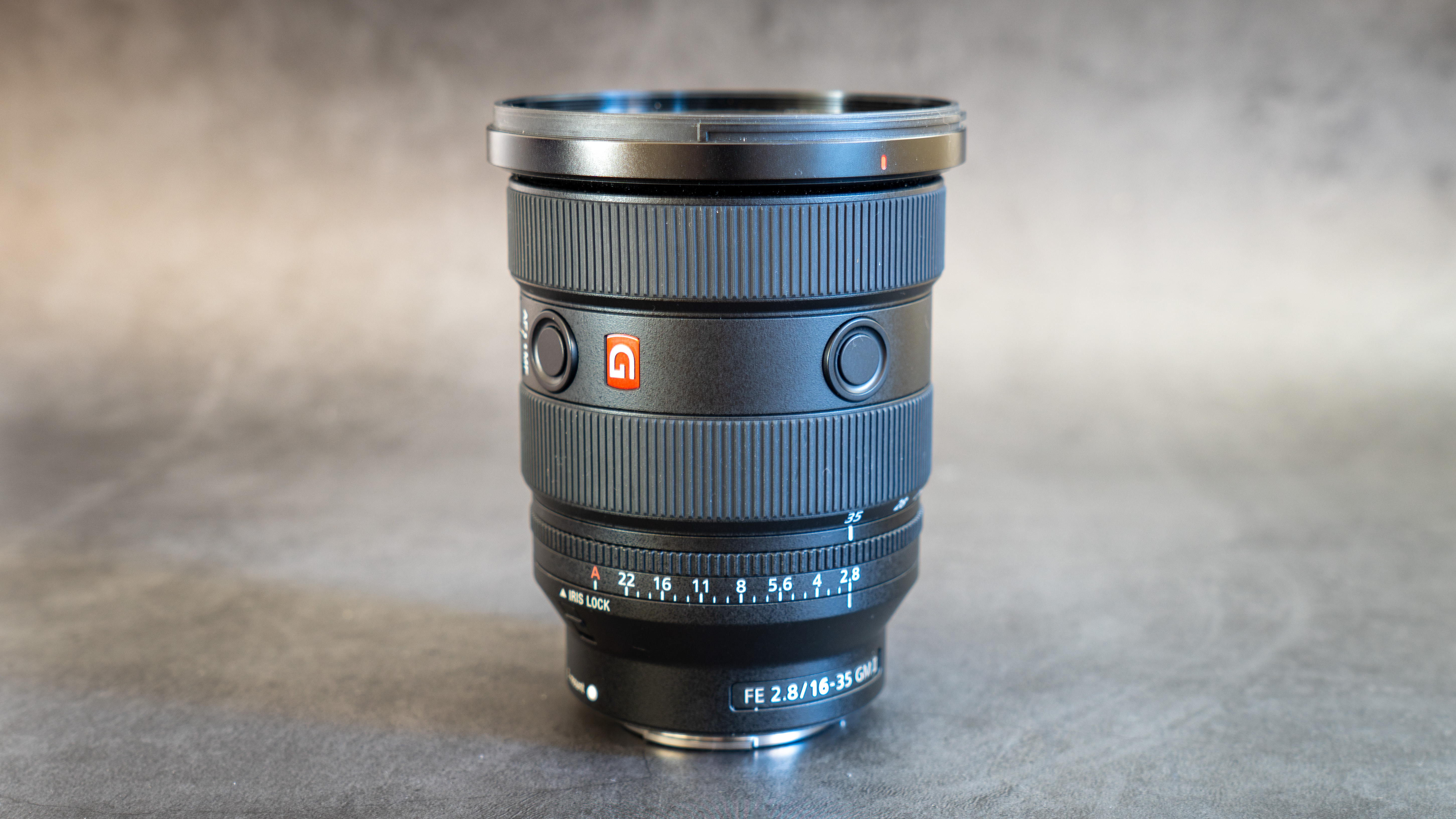
Type: Full frame standard zoom
Focal Length: 16-35mm
Aperture: Constant f/2.8
Lens Mount: Sony E
Weight: 1 lb 3 oz (547g)
Dimensions: 3.45 x 4.39-inches (87.8 x 111.5mm)
Filter Thread: 82mm
Release Date: September 2023
Of the three lenses, astro shooters will be especially interested in this lens in particular, as its wide-angle focal length is very well suited for night sky photography (16-20mm being great for this) and its constant f/2.8 aperture means it can let in a decent amount of light. It also has the versatility to turn its hand to other photography styles like landscapes and street photography, making it a great all-rounder and a worthy part of your kit bag.
But there's no ignoring that it's not a cheap lens no matter how you slice it. It's currently retailing at $2298, so only the pros will likely be able to afford it. It's a fantastic zoom lens that provides stunning results when paired with the best mirrorless cameras, so let's take a closer look to find out whether the large investment is worth it.
Sony FE 16-35mm f/2.8 GM II: Design
- Smaller and lighter than the original version
- Has two custom buttons
- Upgraded aspherical elements and glass coatings
The first thing we noticed when we picked up the Sony FE 16-35mm f/2.8 GM II lens was its size. It's not a small lens by any means, nor were we expecting it to be, but it's surprisingly lightweight. It weighs 547g (1.18 lbs), which is around 20% lighter than the original version (680g). It may not seem like much of a difference on its own, but when you're carrying multiple lenses with you on long shoots, the weight adds up. They've also shaved about 10mm off the length of the lens — again, not the biggest difference, but any kind of space and weight-saving measures are fine by us.
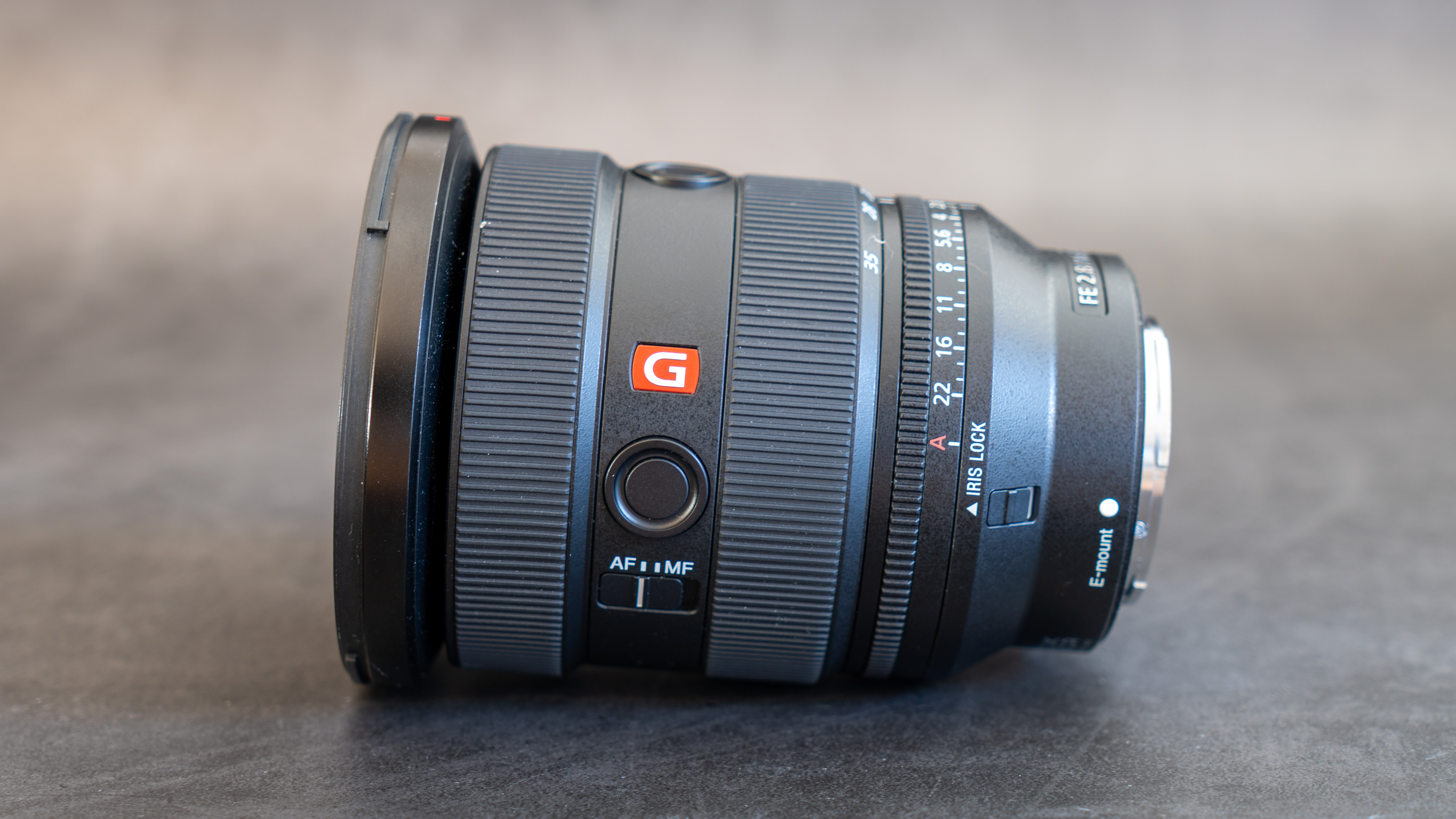

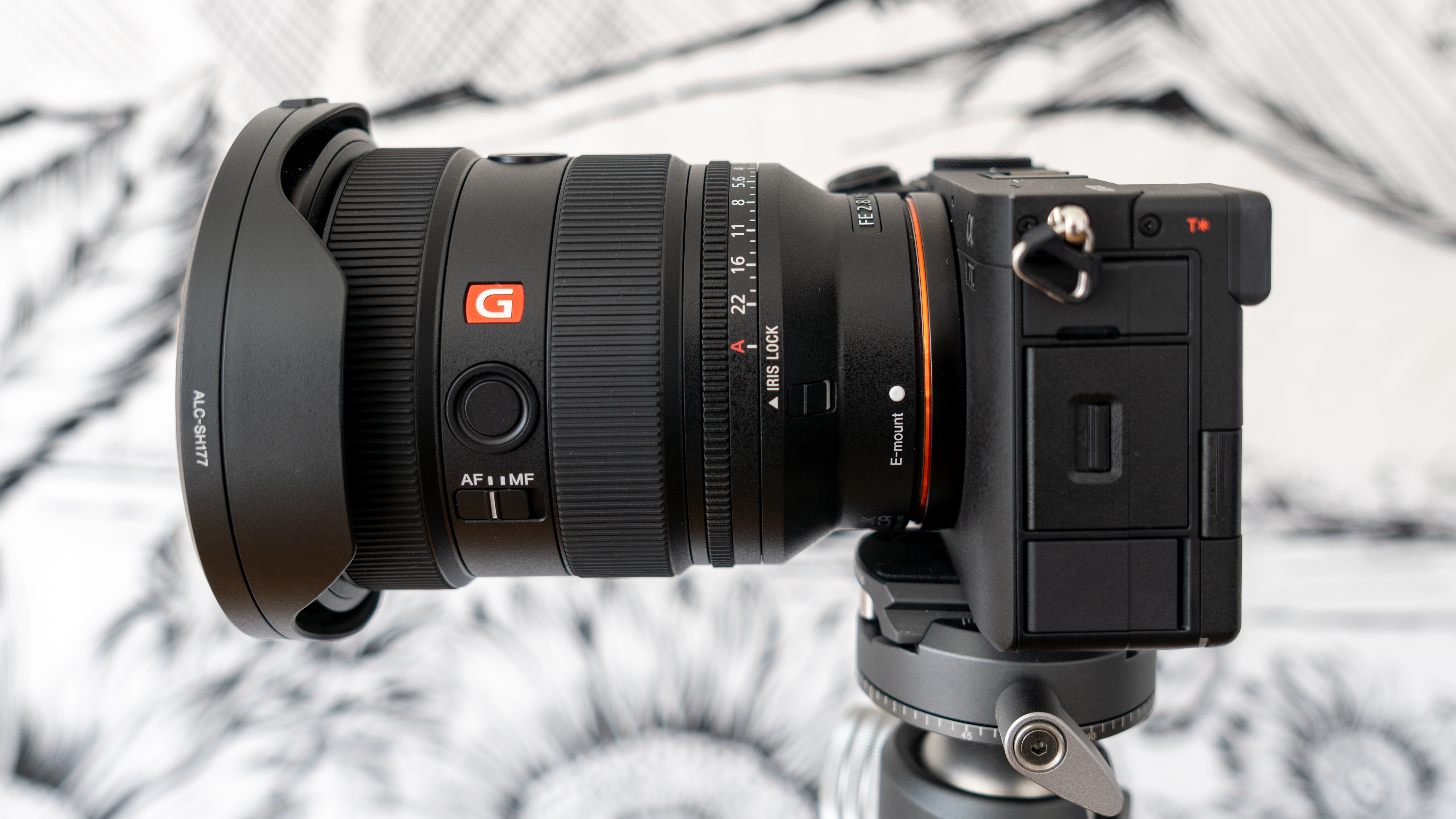
The lens has a clickable aperture ring (with an on/off switch), a focus ring, manual and autofocus switch, an iris lock and two custom buttons. It has an 82mm filter thread (same as the original), which means you won't need to shell out for a whole new set of lens filters if you're upgrading from the original version.
It comes with a removable lens hood as standard, although we did think the lens hood was very small and we don't think it'll shield the glass from a whole lot, rendering it almost pointless. Luckily, the lens is fully weather-sealed against moisture and dust, which is important if you're using this lens for landscapes and street photography where you may be caught out by bad weather. We'd also have liked a smooth/tight switch to adjust the friction of the focus ring, which was one feature we liked about the Sony FE 24-70mm f/2.8 GM II when we reviewed it.
The updated version also has a new optical design featuring five aspherical elements, including three XA (extreme aspherical) elements. In comparison, the original version of this lens only had two XA elements. It also has Sony's new Nano AR Coating II, which helps to reduce flare and ghosting.
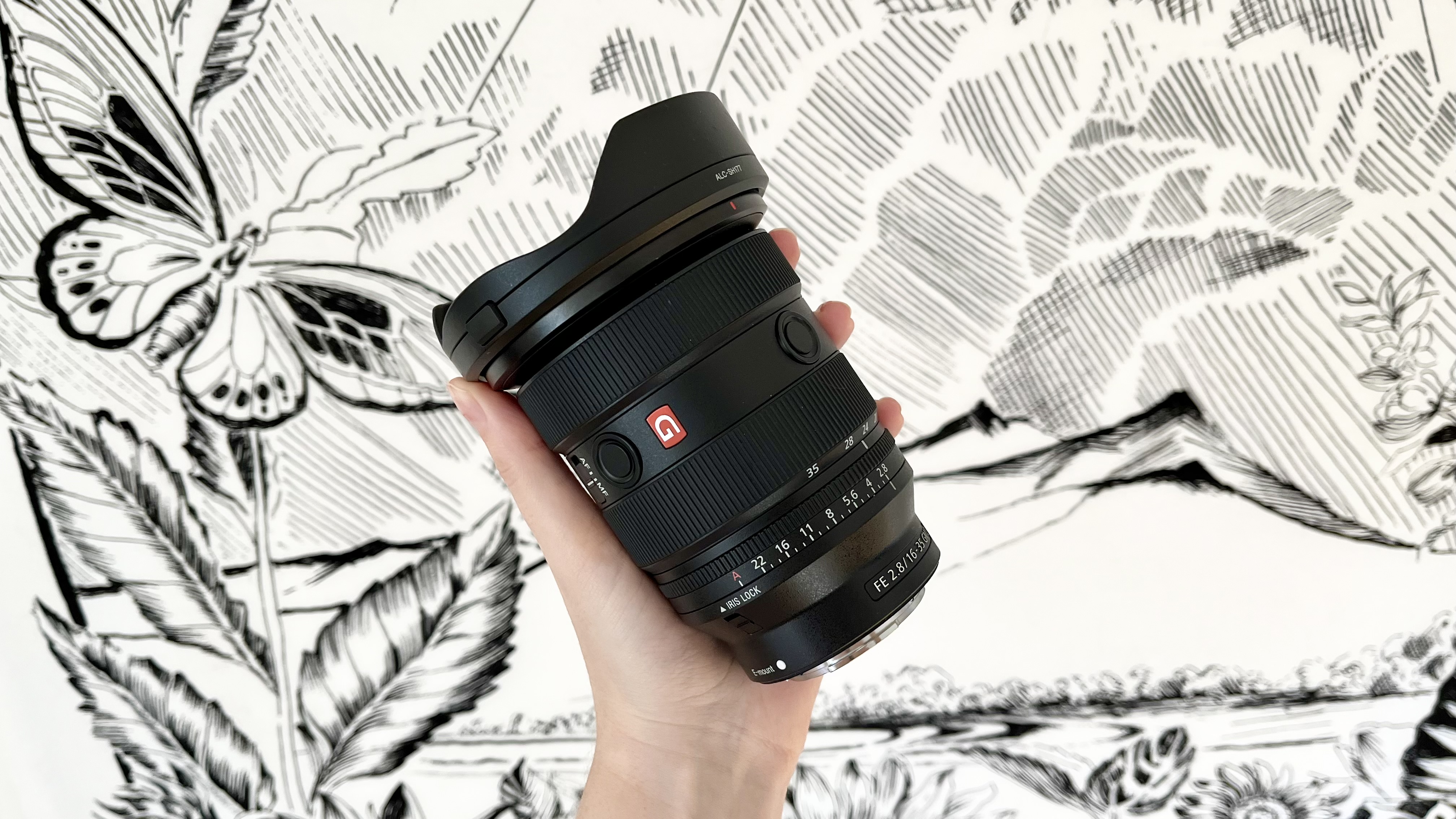
🔎 Sony FE 16-35mm f/2.8 GM II: The build quality is largely what you'd expect from a Sony G Master lens, with similar upgrades to the other two holy trinity lenses. It's not perfect, but we found it pleasant to use. ★★★½
The zoom is slightly unusual in that the lens extends out when you zoom out to 16mm, and then retracts when you zoom in to 35mm. It doesn't make a huge amount of difference when you're using it, but we did think it was a bit of an odd choice when we're all used to it being the other way around and muscle memory may be used to putting the lens back to the widest focal length to retract it back into the barrel when turning the camera off.
Sony FE 16-35mm f/2.8 GM II: Performance
- Images are incredibly sharp and bright
- Bokeh and sunstars are only ok
- Basically no color fringing around objects
In terms of performance, our reviews are overall very positive, with a couple of small aspects we weren't so impressed with. When it comes to image quality and detail, we were incredibly impressed and the images were sharp, bright and produced beautiful colors. We took it to an arboretum in the fall and when we photographed some of the backlit trees, there was no chromatic aberration (color fringing) at all, which is impressive.
We weren't hugely impressed with the sunstars at f/22 and found that they were a bit hit-and-miss. That said, sunstars aren't something you tend to see a lot of (especially in astrophotography!), so for many users, it won't be a huge problem that they're not outstanding.
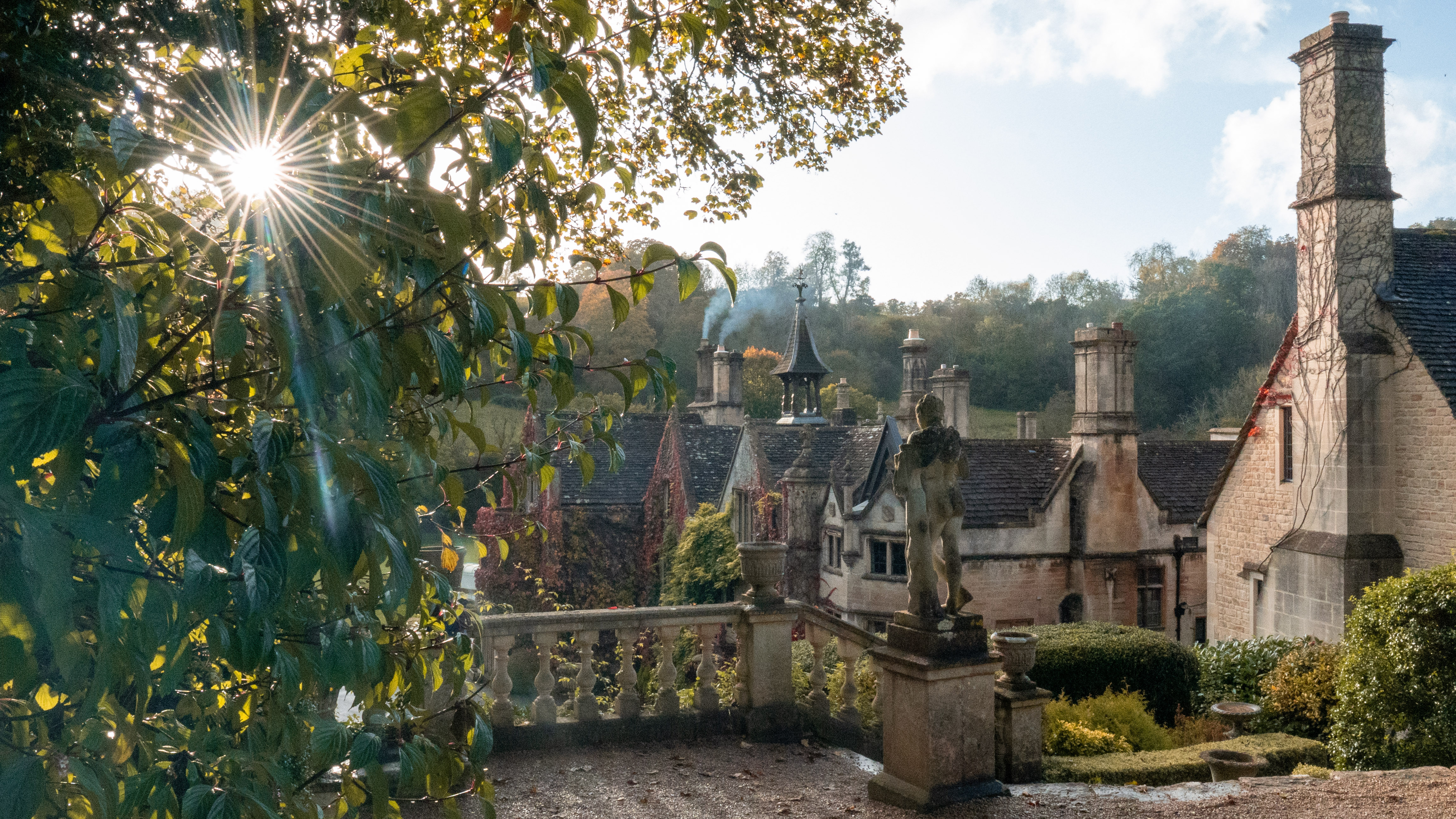
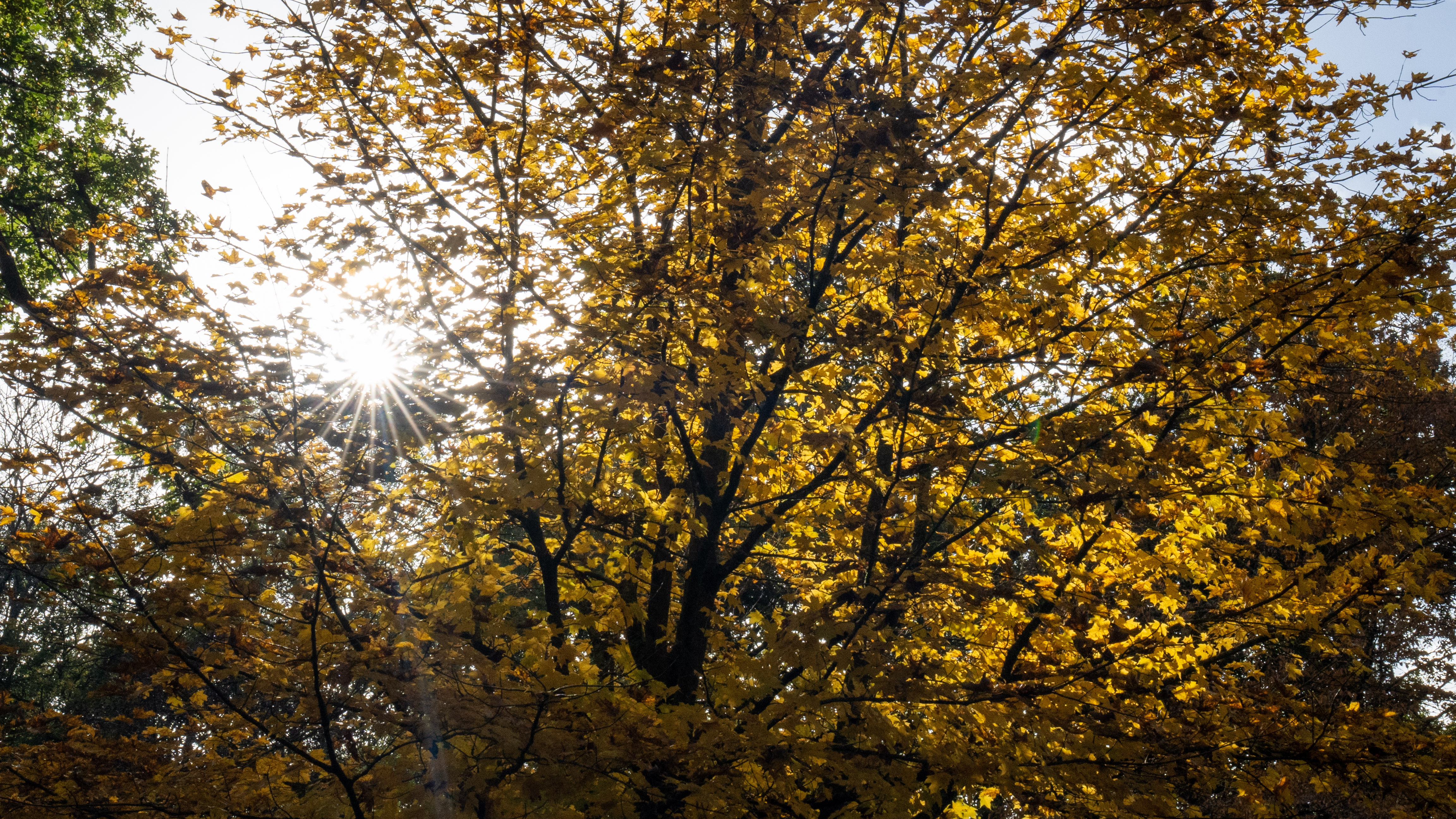
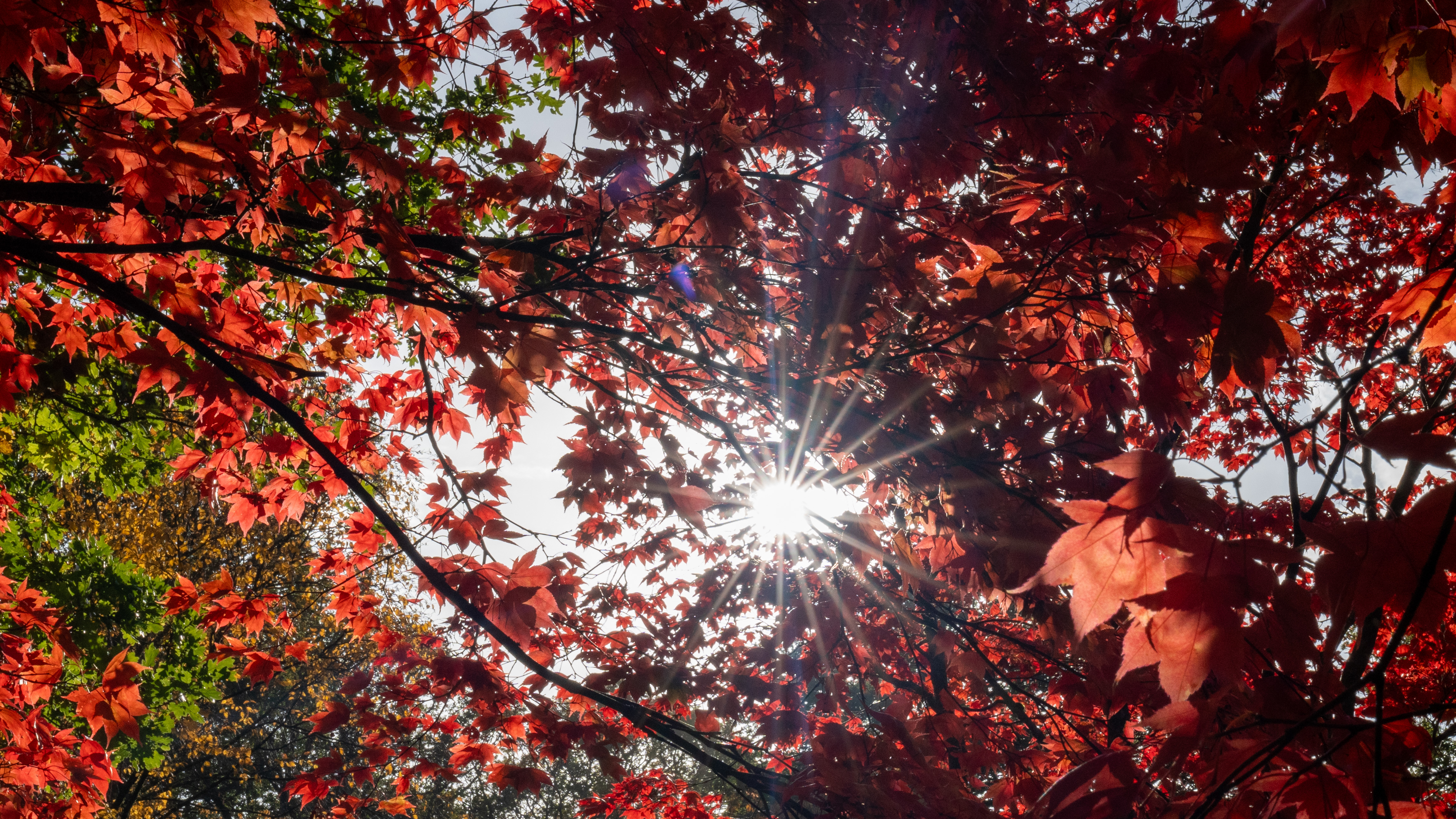
We also noticed a fair amount of flare and ghosting in some of the sunstar images we took, which could potentially pose difficulties if you like to include the sun in your landscape images.
We also found the bokeh to be slightly underwhelming — it was fine when shooting wide open, but stopping down any further than around f/4.5 and it started to lose its appeal. That said, wide-angle lenses don't tend to be used for bokeh anyway.
On the positive side, there's barely any focus breathing and the images were incredibly sharp at all apertures. We tested it at various apertures at 16mm, 24mm and 35mm, and it was only at 35mm that we saw a very tiny drop off in sharpness at the corners at the lower apertures. We don't think anyone would be upset with the sharpness of this lens.
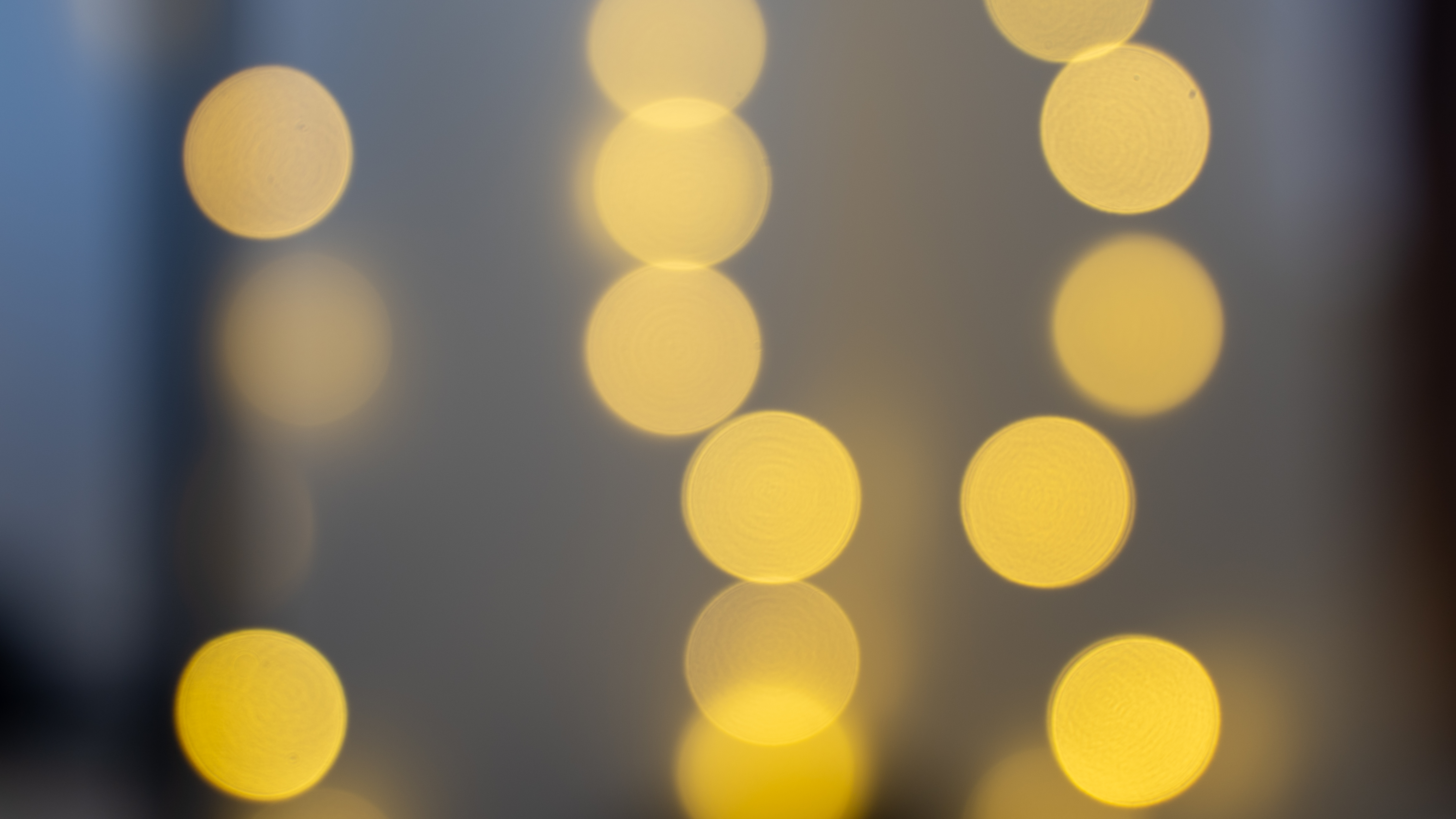
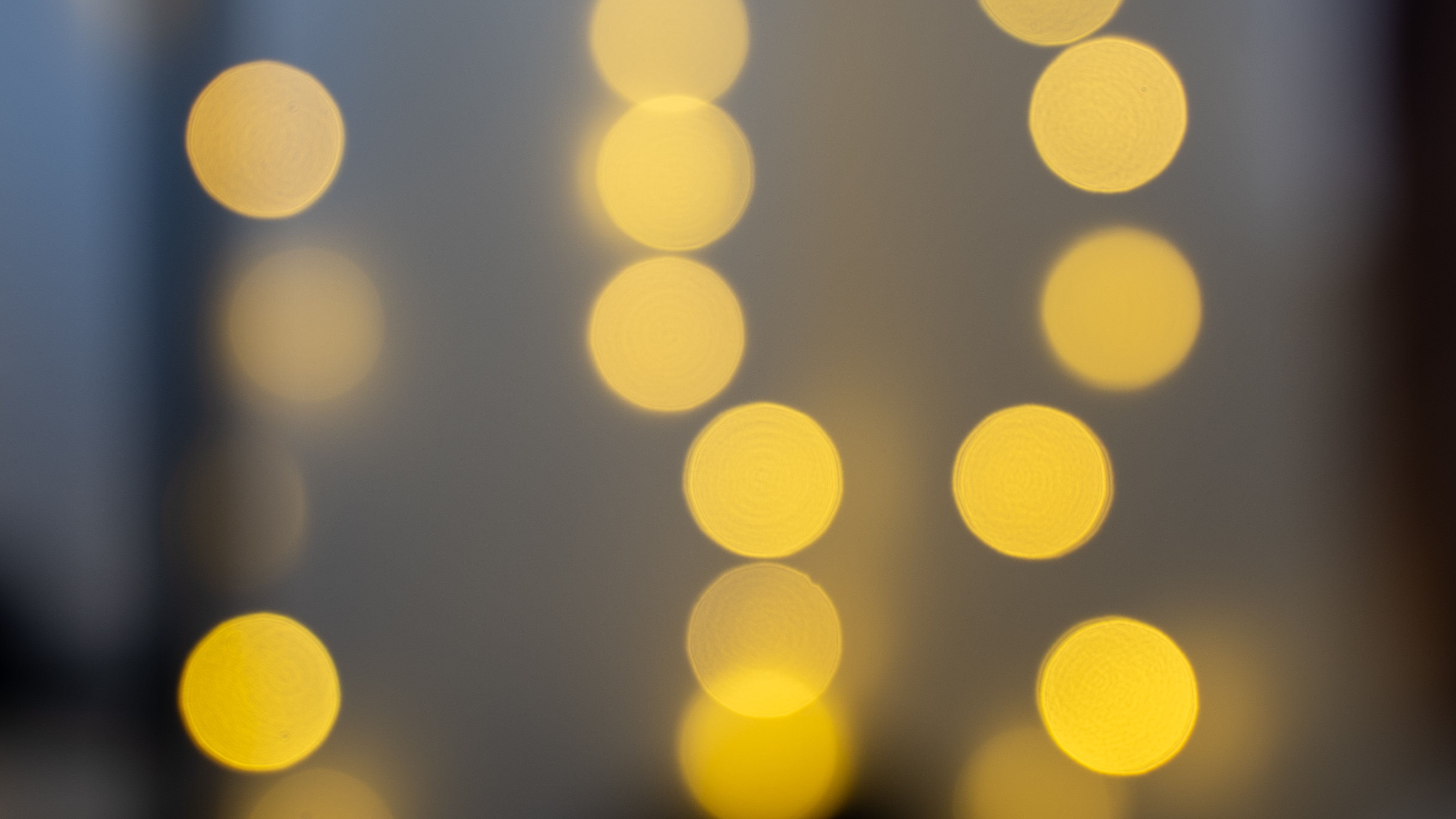
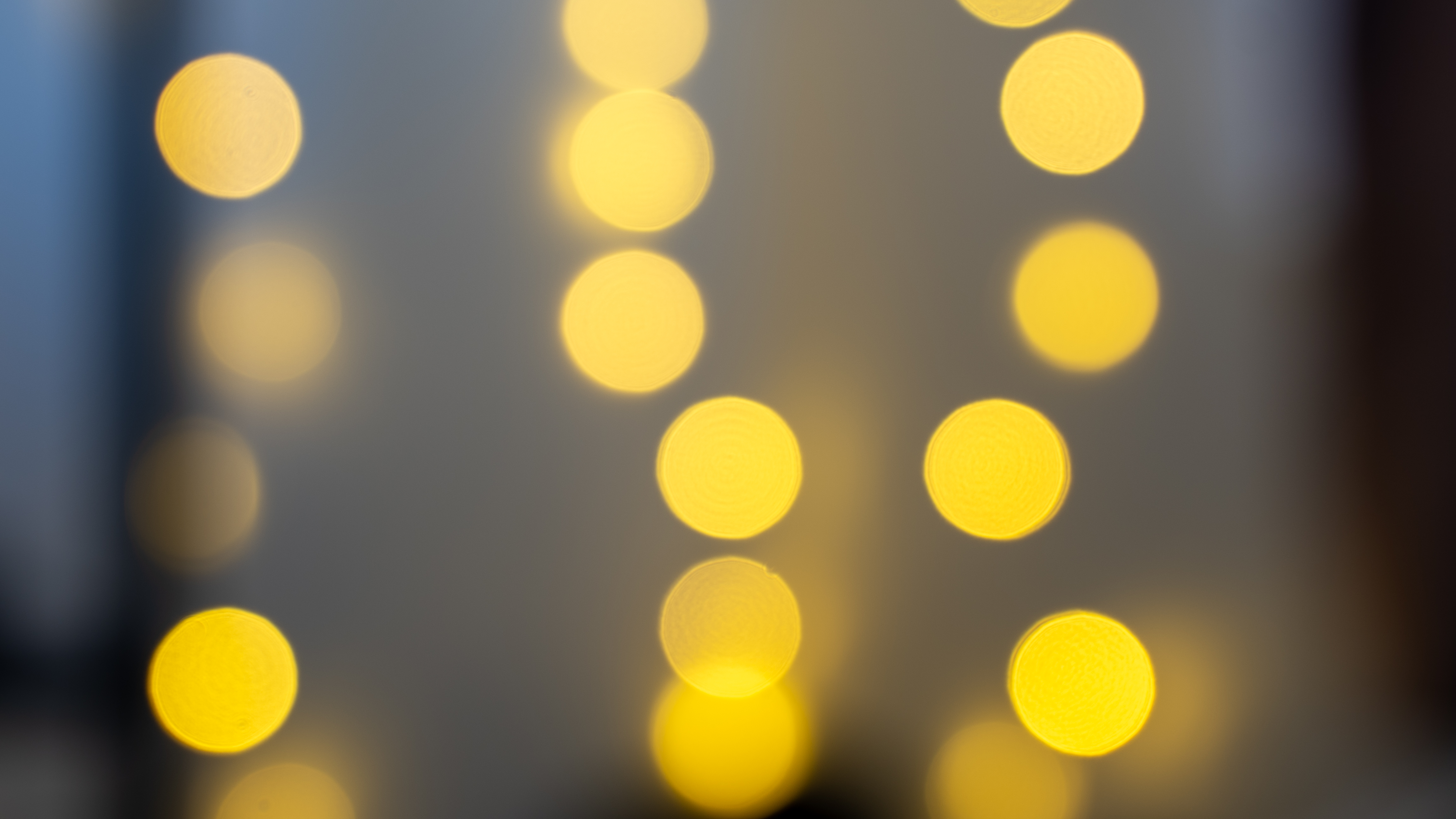
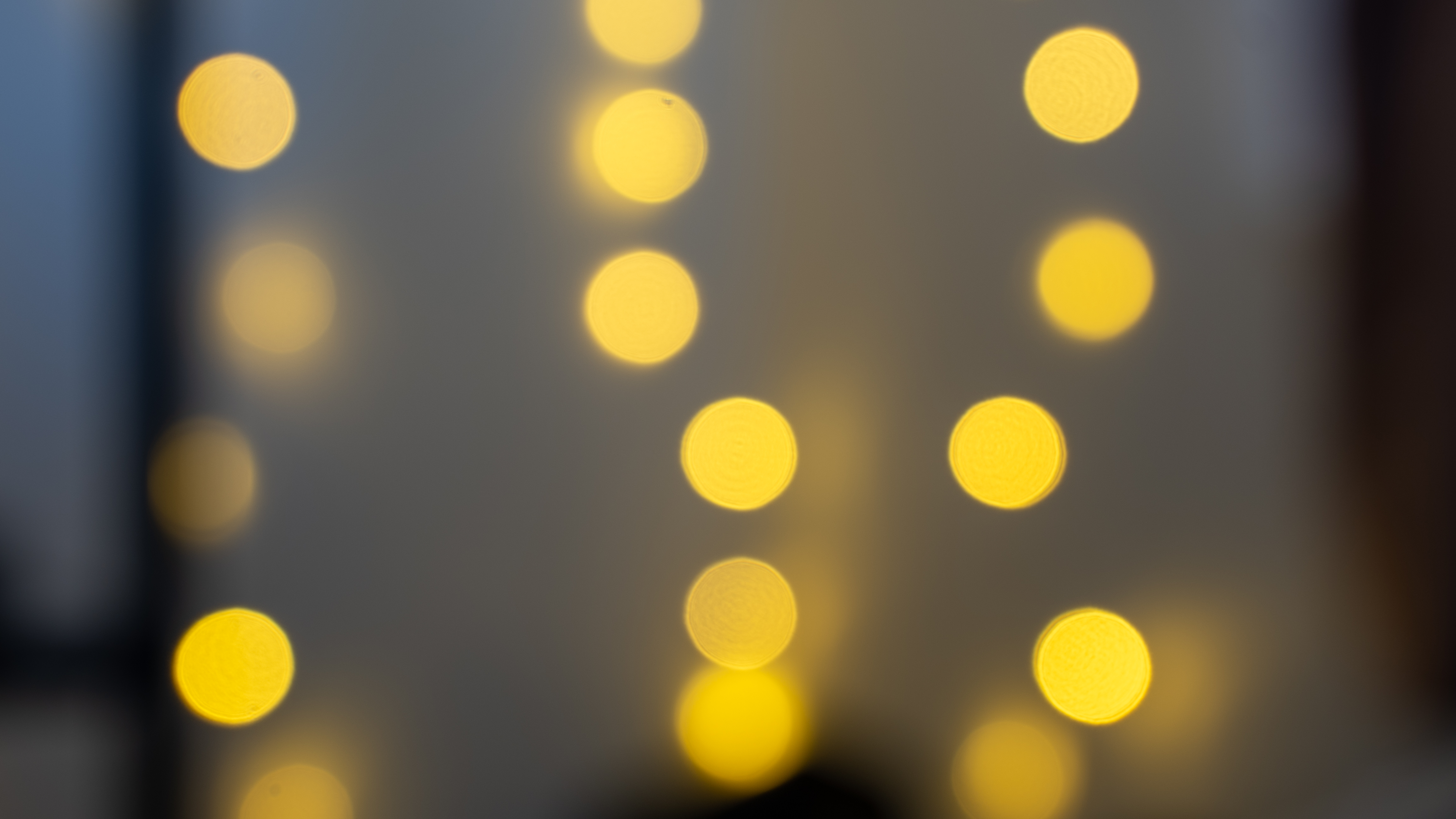
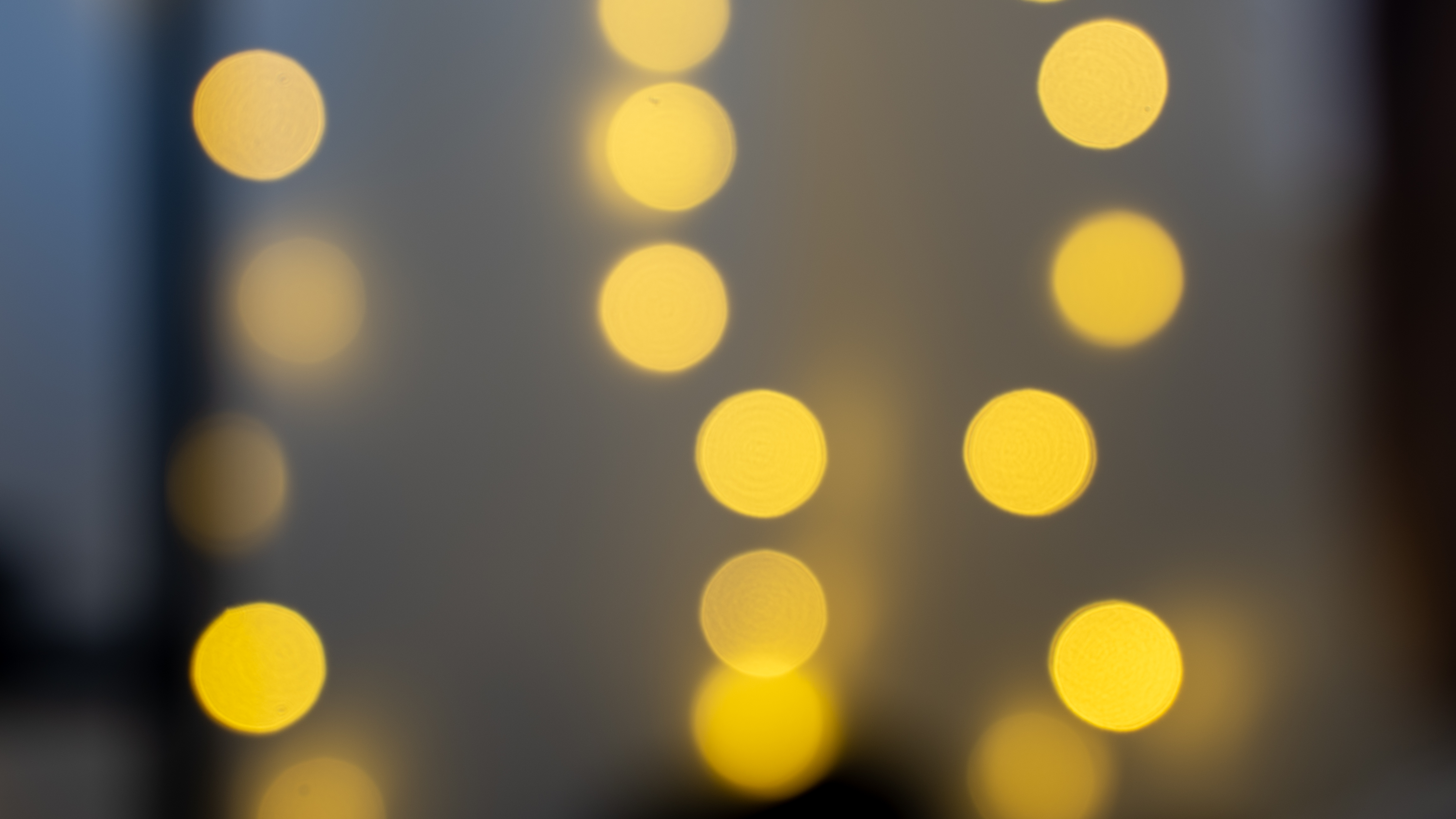
🔎 Sony FE 16-35mm f/2.8 GM II: The image quality is where this lens really excels, and even though we weren't hugely impressed with the bokeh or sunstars, we thought the detail and colors this lens produces were exceptional. ★★★★½
We were pleased with its astro performance, although it's unlikely that dedicated astrophotographers will be spending over $2200 on an f/2.8 lens when there are some fantastic wide-angle primes available at f/1.8 for a similar price or cheaper. But we thought it captured light extremely well with minimal coma or barreling, and we think it would be great for casual astro shooters who also shoot landscapes and other styles of photography, particularly when paired with a camera with image stabilization.
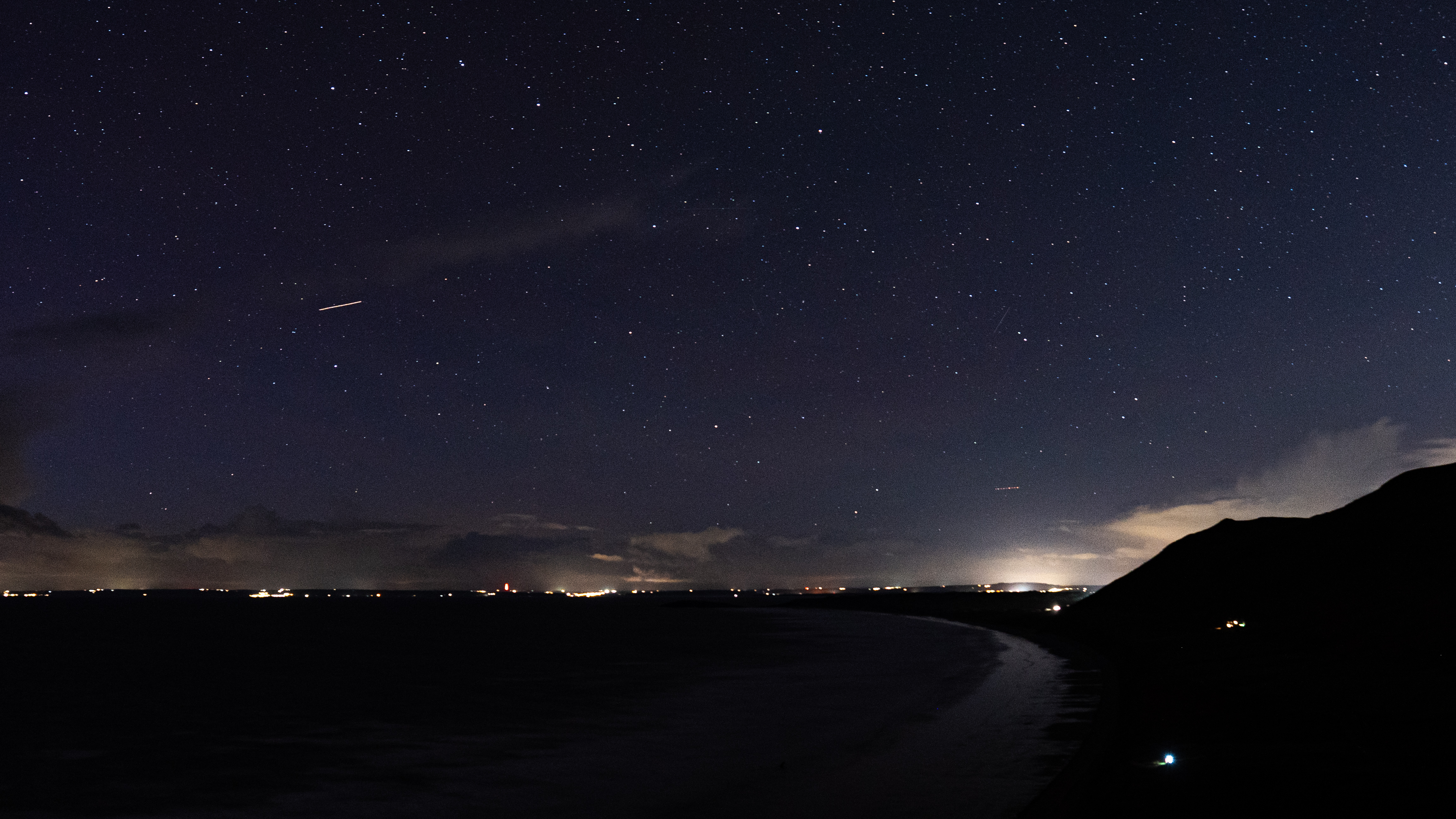
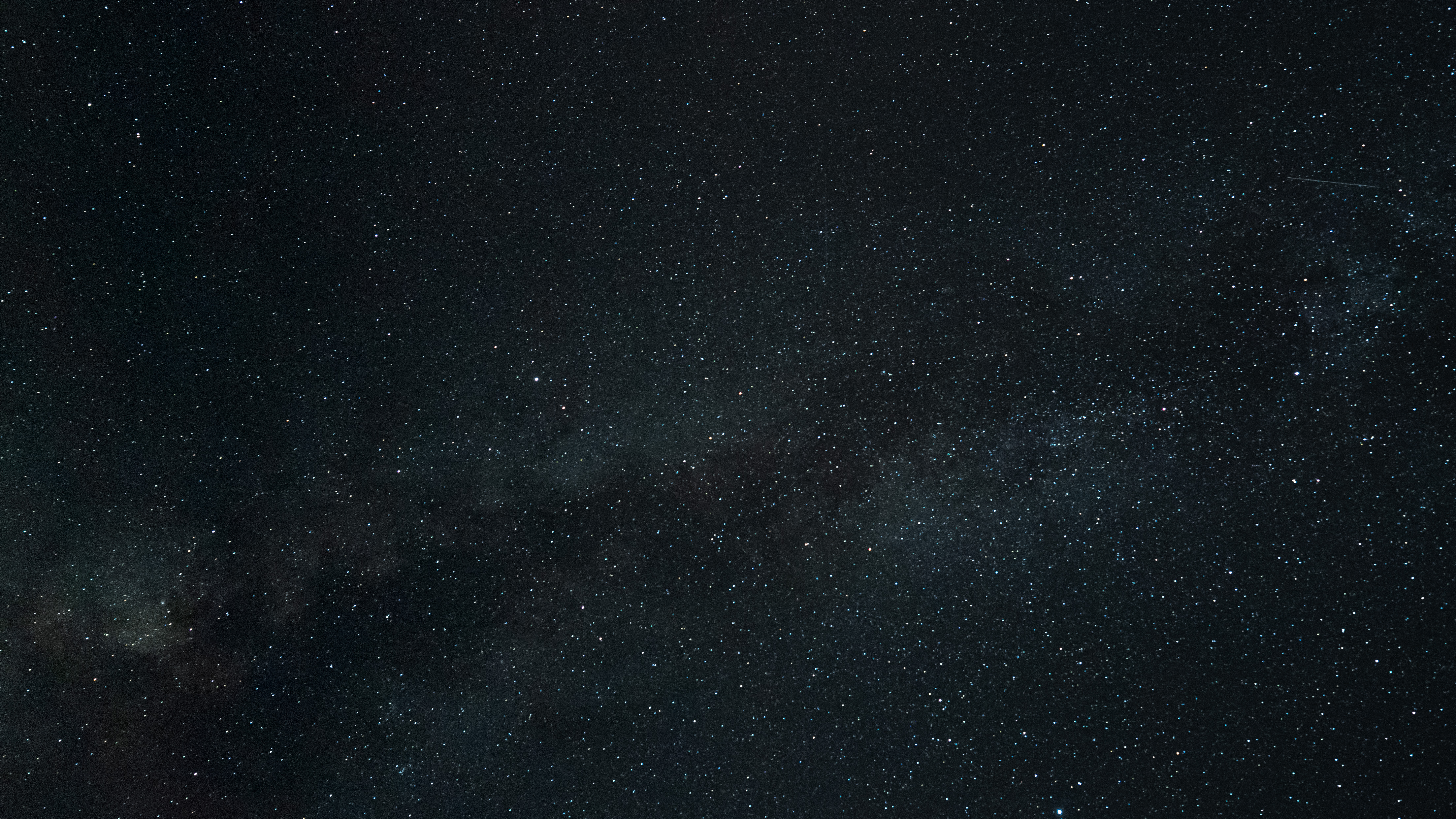
Sony FE 16-35mm f/2.8 GM II: Functionality
- No image stabilization
- Fast and quiet autofocus
- Closer minimum focusing distance than the original version
Usually, we'd be a little disappointed that the lens doesn't have any image stabilization (especially for the price). However, we can see why they haven't included it in this lens. The 16-35mm focal length will primarily be used for astro, landscapes and the kinds of photography you'd generally require one of the best tripods for, so there isn't as much need for image stabilization as there is in, say, a 70-200mm lens.
Plus, you can always rely on the stabilization in the camera body. If we were going to nitpick, you tend to get slightly better results when you pair a body and lens that both have stabilization. Still, we think adding it here when it's not completely necessary would make an already expensive lens even more costly.
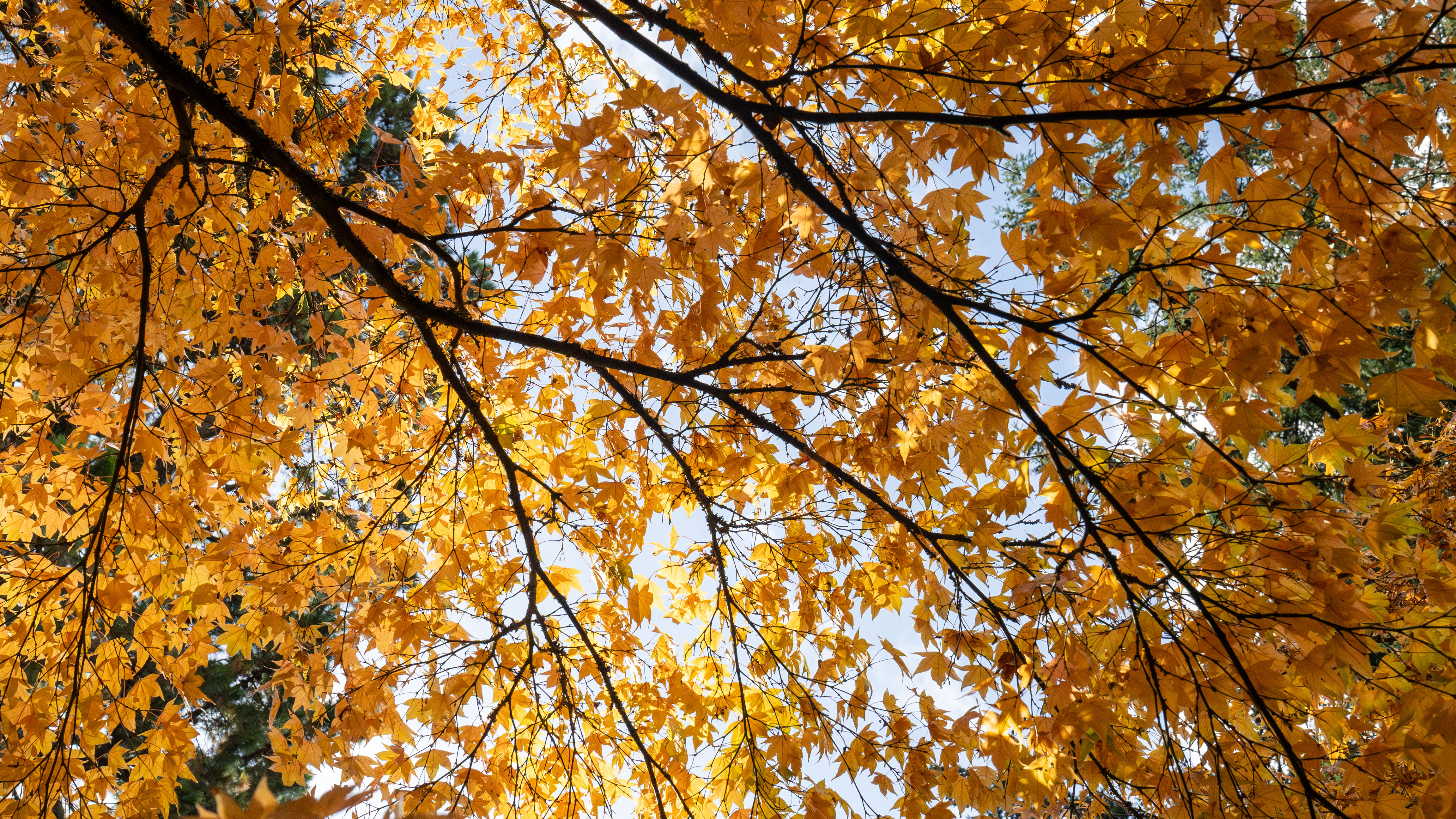
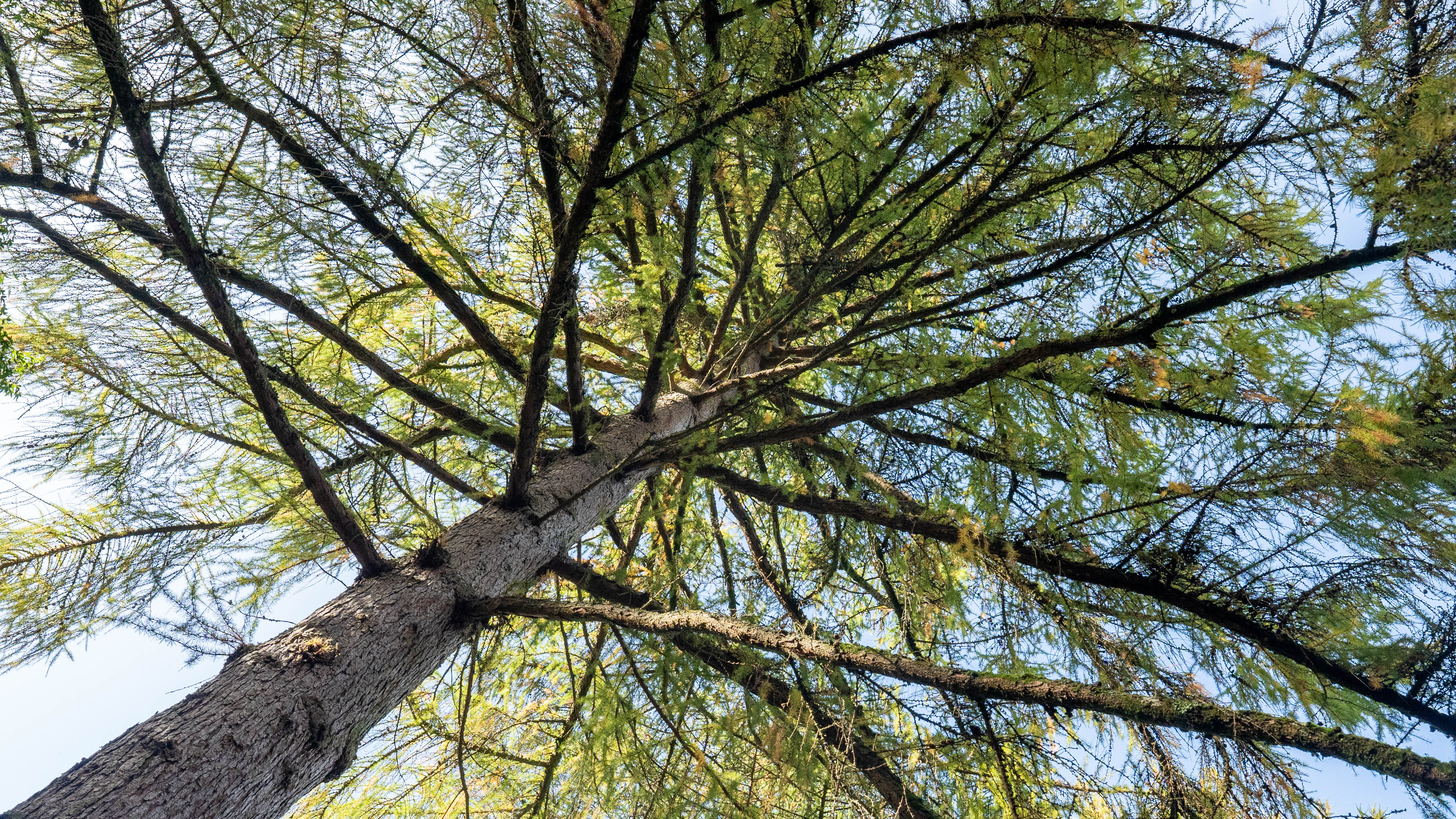
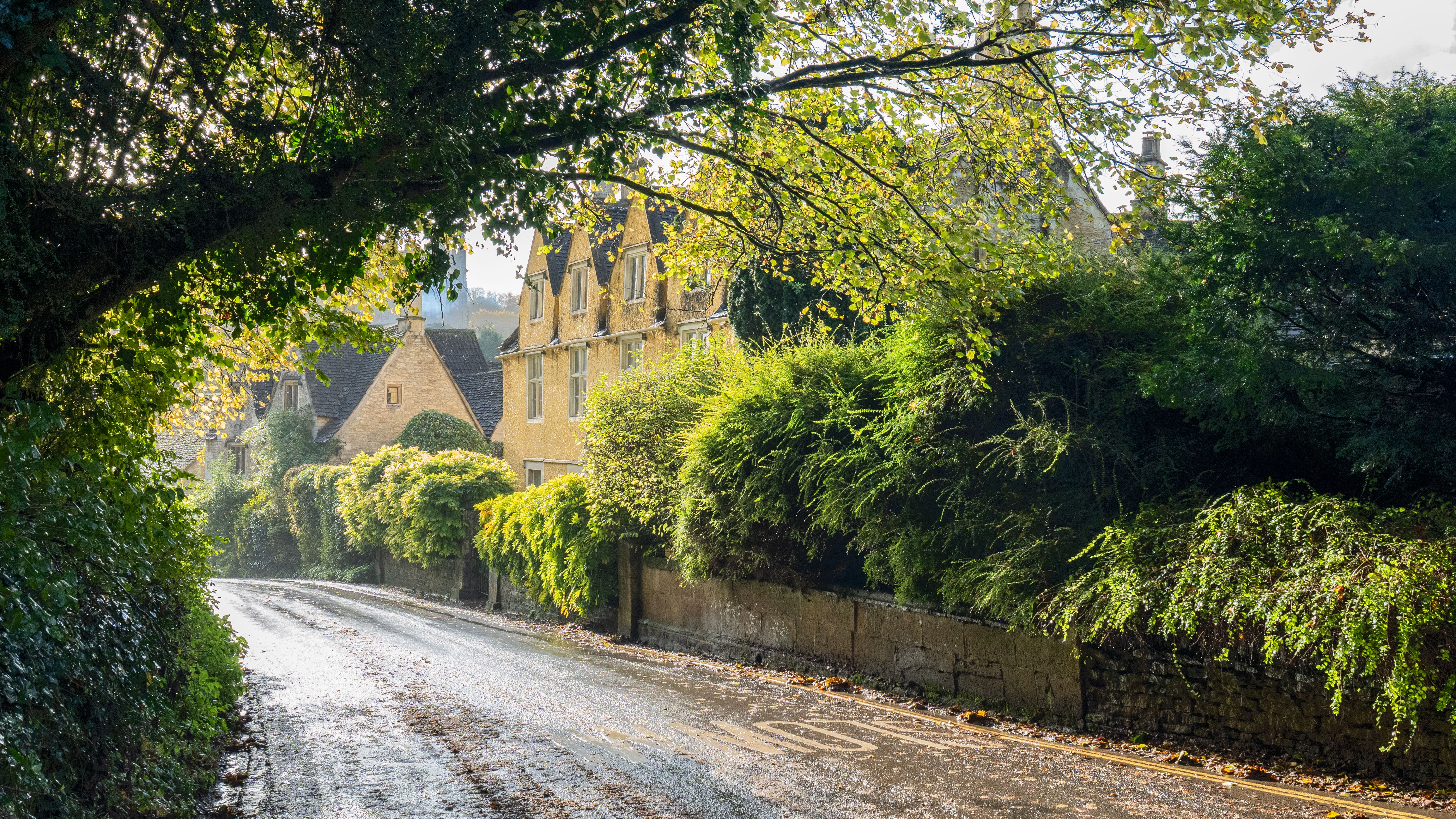
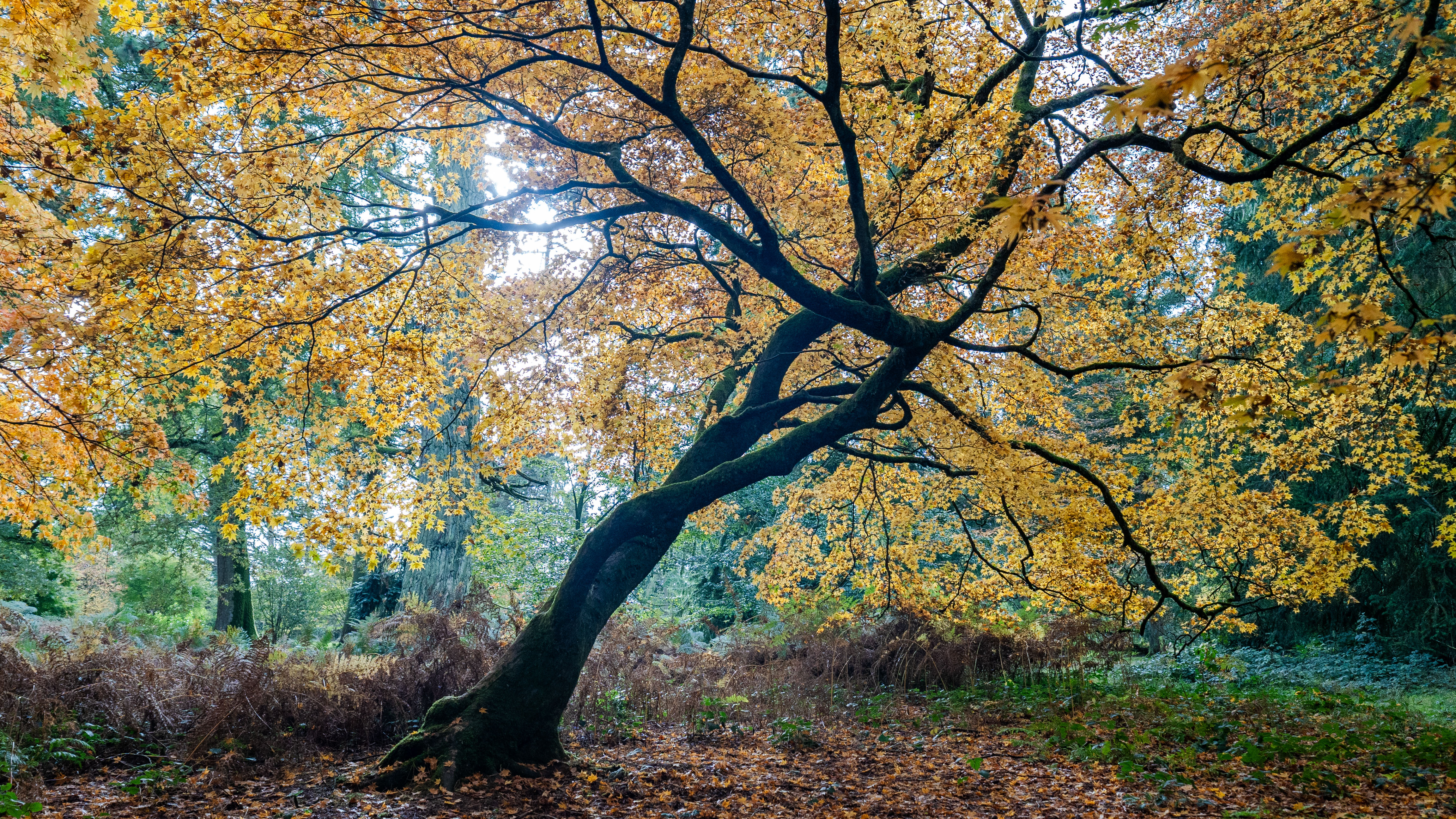
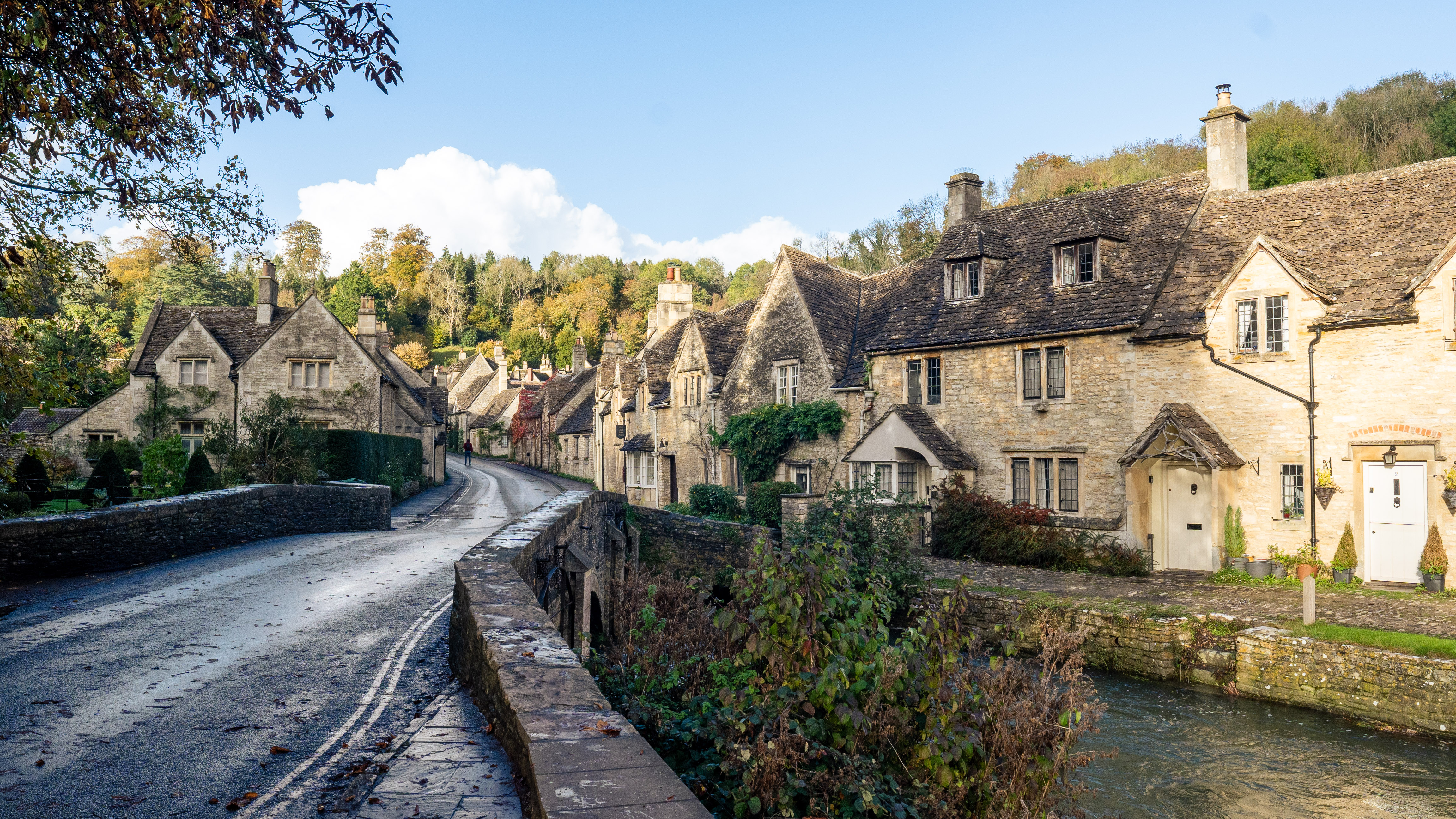
🔎 Sony FE 16-35mm f/2.8 GM II: The close minimum focusing distance opens this lens up to almost macro capabilities, but its lack of image stabilization means you'd likely need a tripod depending on which photographic style you're doing. ★★★★
We tested this lens with the new Sony A7C II, and the lens was perfectly able to keep up with the camera's impressive autofocus capabilities. We took photos of a pair of black cats and the lens was fast and accurate as they moved around the frame, continuously tracking them and keeping the eyes in focus.
Another upgrade made to this lens is an improvement in the minimum focusing distance — the original version could focus as close as 0.28m (0.92 ft), with the Mark II being capable of focusing as close as 0.22m (0.73 ft). We noticed that when one of the cats came over to have a sniff of the lens, although it didn't keep focus on their eyes, it did still keep focus on some of the fur on the face.
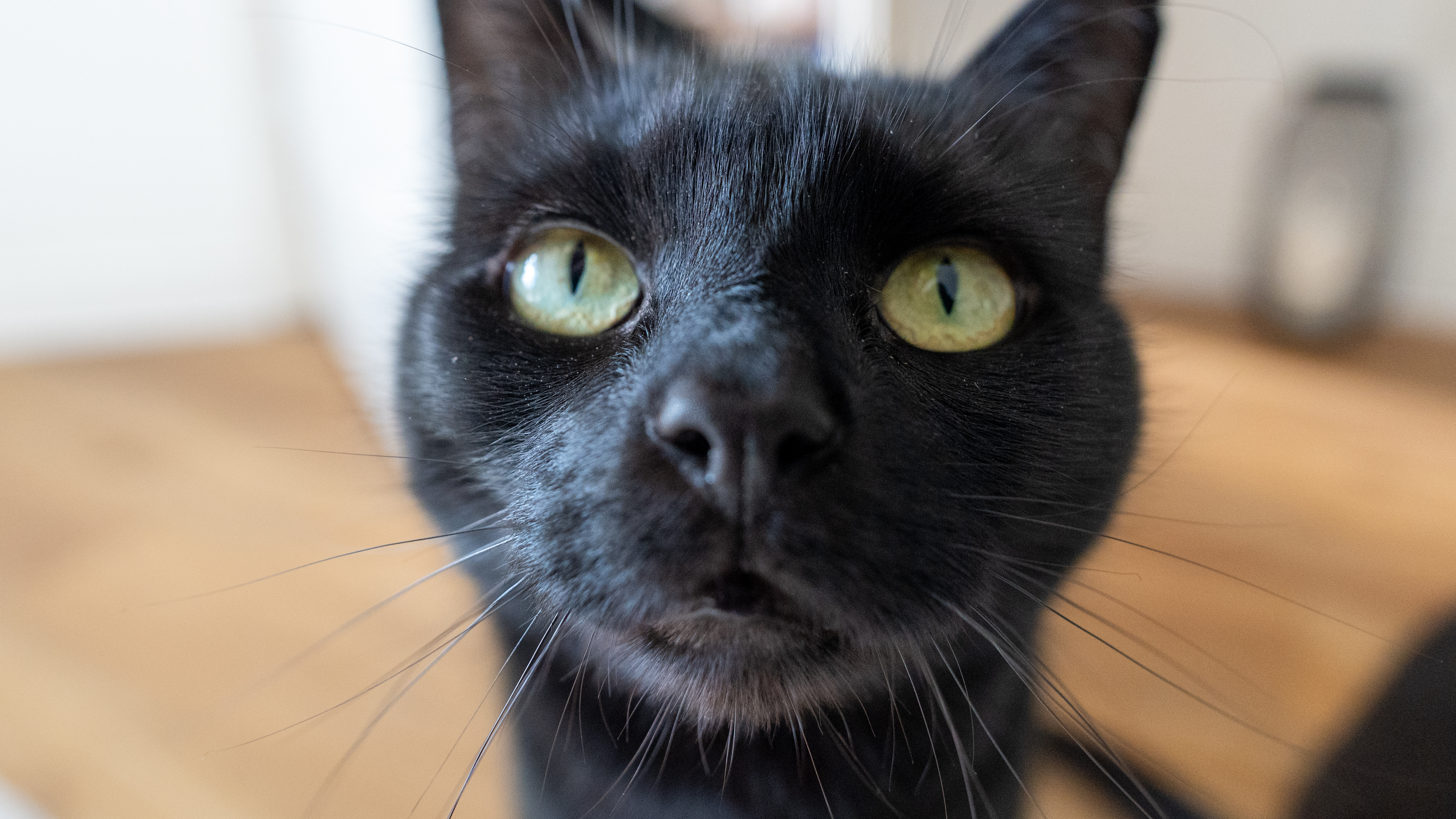

Should you buy the Sony FE 16-35mm f/2.8 GM II?
✅ You shoot multiple styles: Although it's not suitable for every kind of photography, if you shoot landscapes, street photography and astro, this lens will suit you well.
✅ You're a pro: As this is an expensive lens, it's only really accessible to pros and those who can afford a $2000+ lens.
❌ You only shoot astro: There are other more astro-suited lenses available for less money.
❌ You're on a budget: This is an expensive pro-grade lens, so anyone on a budget will want to consider more affordable options.
This is absolutely one of the most impressive lenses we've tested across different subjects, so, on paper the answer would be 'yes'. However, it does depend on what kind of photography you do, how big your budget is and whether you already have the original version of this lens.
If you just shoot astro and not much else, you'll likely be better suited to a wide-angle prime lens with a wider aperture (many of our favorites are also cheaper than this lens). On the other end of the spectrum, if you shoot wildlife or sports then this lens also won't be right for you as you'll need a much longer focal length.
Due to the high cost, this lens is really only accessible to professionals and anyone who makes money from photography and can afford to buy the best of the best. If you can afford it, this is a fantastic lens that will produce stunningly detailed shots every time and will last you through many shoots over the years.
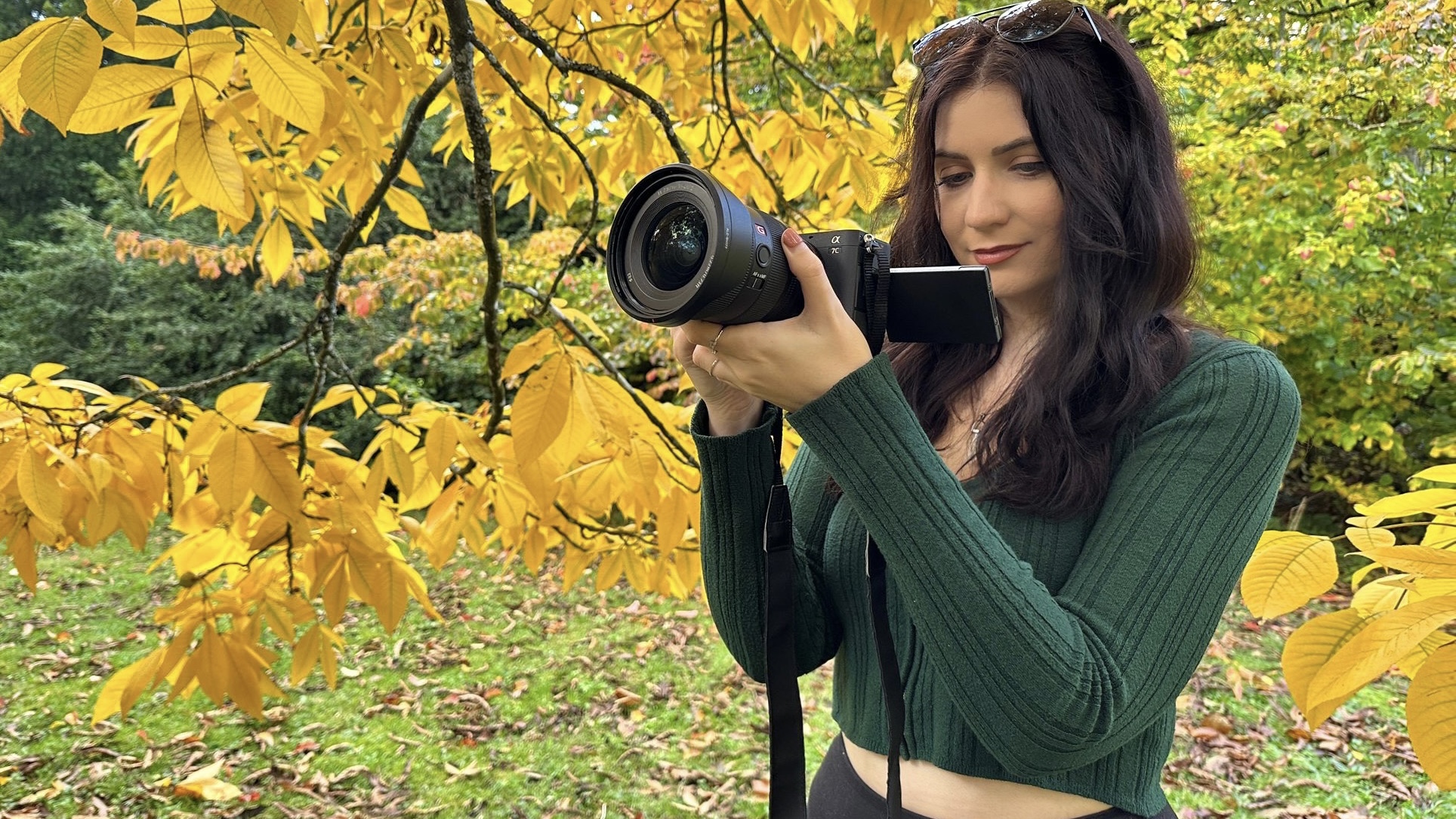
If the Sony FE 16-35mm f/2.8 GM II isn't for you
If you can't justify the cost of this lens, you could consider the Tamron 17-28mm f/2.8 Di III RXD — it's outclassed by the Sony overall, but it's also around a third of the cost.
If you're more of an astro shooter and want an even wider lens, we loved shooting with the Sony FE 12-24mm f/2.8 GM lens. It is slightly more expensive, but being able to shoot at 12mm means you can capture even more light in your astro shots.
If you're thinking of going for a prime lens instead of a zoom for astro work, you can't go wrong with the Sony FE 14mm f/1.8 GM — it's also much cheaper than the 16-35mm f/2.8 GM II and ideal if you focus more on astrophotography. And if you want to open up the aperture even more, check out the Sigma 14mm f/1.4 DG DN Art, which we loved.
Join our Space Forums to keep talking space on the latest missions, night sky and more! And if you have a news tip, correction or comment, let us know at: community@space.com.

Kimberley Lane is a landscape & seascape photographer living in South Wales. Originally using photography as a way to cope with health issues, she aims to portray a feeling of calm and peace through her images. Her work has been featured in a number of national photography magazines.
